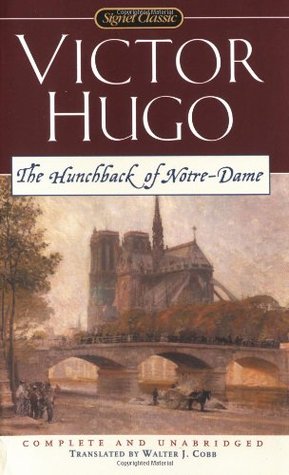

With more than 1,700 titles, Penguin Classics represents a global bookshelf of the best works throughout history and across genres and disciplines. This revised edition also includes further reading and a chronology of Hugo's life.įor more than seventy years, Penguin has been the leading publisher of classic literature in the English-speaking world. John Sturrock's clear, contemporary translation is accompanied by an introduction discussing it as a passionate novel of ideas, written in defence of Gothic architecture and of a burgeoning democracy, and demonstrating that an ugly exterior can conceal moral beauty. Victor Hugo's sensational, evocative novel brings life to the medieval Paris he loved, and mourns its passing in one of the greatest historical romances of the nineteenth century. Esmerelda, however, has also attracted the attention of the sinister archdeacon Claude Frollo, and when she rejects his lecherous approaches, Frollo hatches a plot to destroy her, that only Quasimodo can prevent. Mocked and shunned for his appearance, he is pitied only by Esmerelda, a beautiful gypsy dancer to whom he becomes completely devoted. In the vaulted Gothic towers of Notre-Dame Cathedral lives Quasimodo, the hunchbacked bellringer.

Only the great rose of the façade, whose thousand colours were engulfed by a horizontal sunbeam, shone in the shadows like a jumble of diamonds and echoed their dazzling spectre at the other end of the nave.More commonly known as The Hunchback of Notre-Dame, Victor Hugo's Romantic novel of dark passions and unrequited love The counter-naves were full of darkness, and the lamps of the chapels were beginning to twinkle, the vaults becoming black. “The cathedral was already dark and deserted.


Its rays, more and more horizontal, are slowly withdrawing from the pavement of the square, and rise along the steep façade, with the thousand round bumps protruding from their shadows, while the great central rose blazes like the eye of a cyclops inflamed by the reverberations of the forge.” A light in the heart of darkness It is the moment when the sun, already heading for the horizon, looks almost directly opposite the cathedral. Especially on those days of clarity, warmth and serenity, there comes a time when we must admire the portal of Notre-Dame. “It was one of those spring days of such sweetness and beauty that all of Paris, spread across squares and promenades, celebrated like a Sunday.


 0 kommentar(er)
0 kommentar(er)
